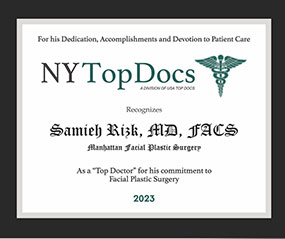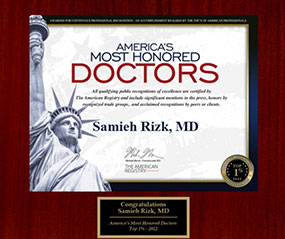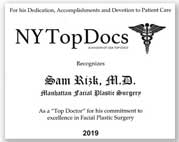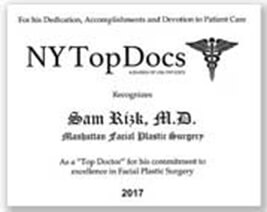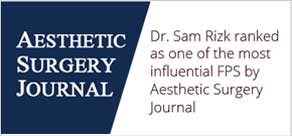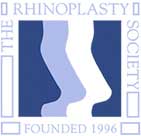Understanding Facelift Scar Revision
Scarring is an inherent part of the healing process after any surgical procedure, including facelifts. However, visible and prominent scars from previous facelifts can be a cosmetic concern, affecting your confidence and satisfaction with the results. Dr. Rizk’s expertise in revision facelifts allows him to correct these issues by strategically improving the appearance of scars and ensuring more aesthetically pleasing outcomes. This is seen in his real patient results in his before and after portfolio.
The Causes of Bad Facelift Scars
Bad facelift scars can result from various factors, including improper surgical techniques, poor incision planning, and inadequate tension management during closure. Errors such as excessive tension on the incisions, incorrect placement of the earlobe, and improper handling of the tragal cartilage can lead to noticeable scarring and unnatural facial contours. Darker-skinned patients may also be at higher risk for hypertrophic scars or keloids.
Dr. Rizk’s Approach to Scar Revision
Dr. Rizk employs a comprehensive approach to facial scar revision surgery, utilizing advanced facelift techniques to achieve the best possible outcomes. During the procedure, he conducts a thorough evaluation of your facial structure and existing scars, considering factors such as:
- Skin type
- Scar texture
- Location
This detailed assessment allows him to tailor his approach to each patient’s unique needs. He often utilizes the preservation deep plane facelift technique, which involves less skin undermining in the neck to preserve more of the blood supply to the skin. This method minimizes additional scarring by preserving healthy tissue and optimizing blood flow to the affected areas.
During the procedure, he carefully excises the scar tissue from previous facelift surgery, ensuring minimal disruption to surrounding healthy skin. His precise incision and closure techniques shift tension away from the incision line to strategic anchor points.
This approach significantly reduces the likelihood of wide or noticeable scars, providing a more natural and refined appearance. By combining these advanced facelift techniques with his meticulous surgical skills, Dr. Rizk effectively addresses previous facelift scarring and helps restore a more youthful, aesthetically pleasing facial contour.
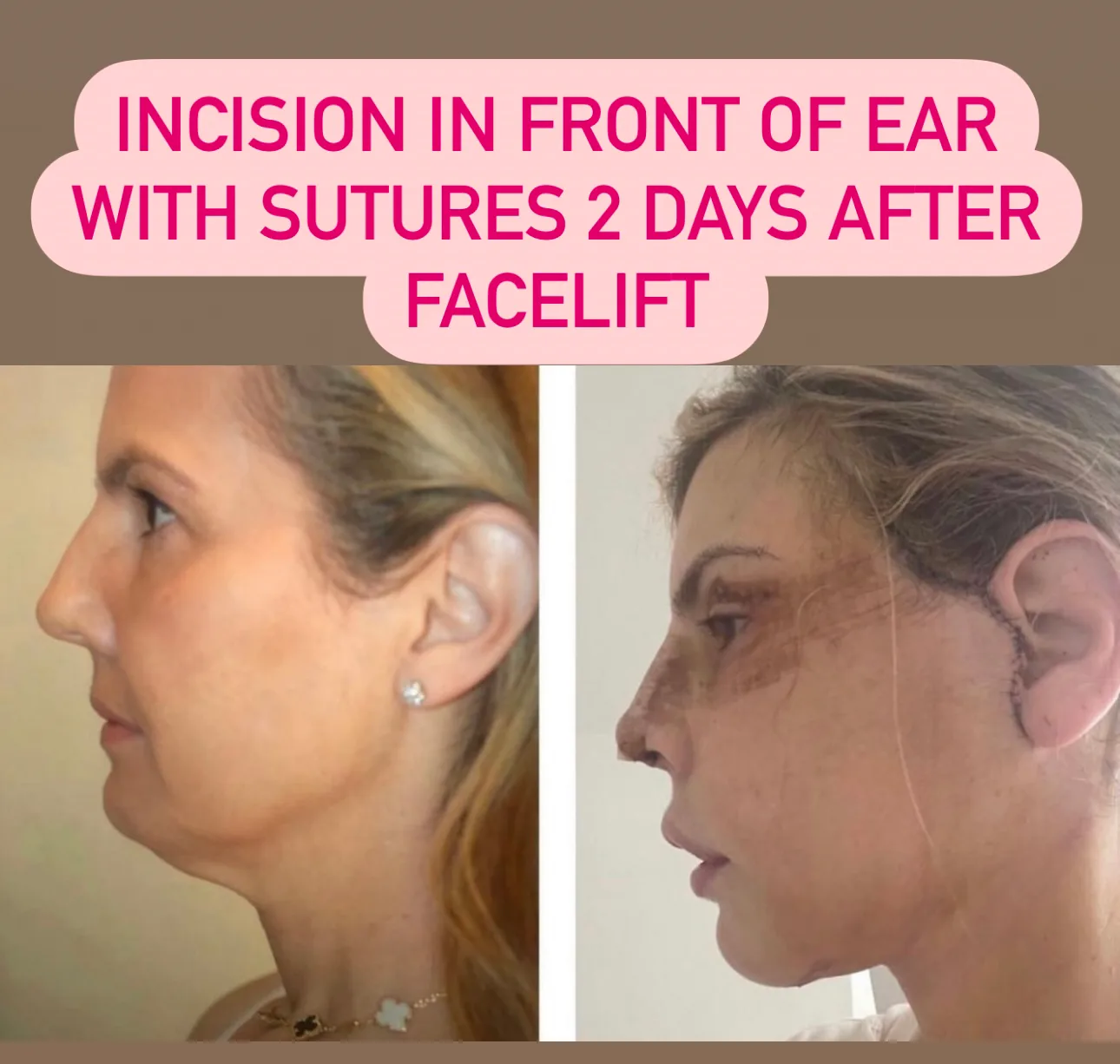
Immediate Post-Surgery (2 Days)
- Incisions: Rizk’s precision in placing incisions with sutures, especially facelift scars3 in front of ears, ensures discreet scarring.
- Appearance: Initially, deep plane facelift scars appear as fine, reddened lines. Mild swelling and bruising are typical at this stage.
- Care: Rest and limited movement are crucial for the initial healing of scars from a facelift.
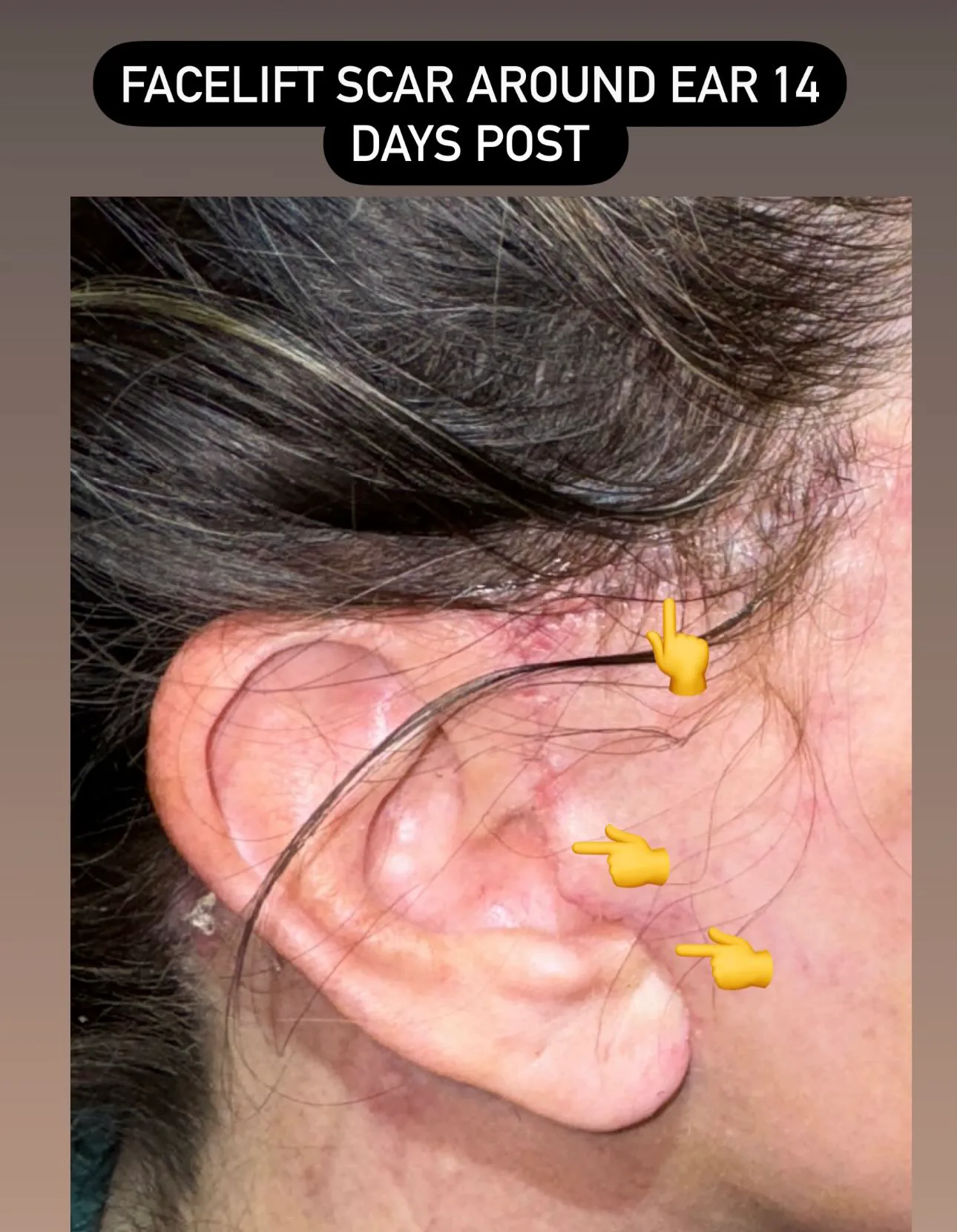
Early Healing Phase | Facelift Scars After 2 Weeks
- Appearance: Facelift scars after 2 weeks start to show significant improvement. As seen in this photo, the redness diminishes, and the swelling subsides, allowing the scars to flatten and blend more naturally with the surrounding skin.
- Care: Gentle care and adherence to Dr. Rizk’s post-operative instructions are key to the healing of facelift scars in front of the ears.
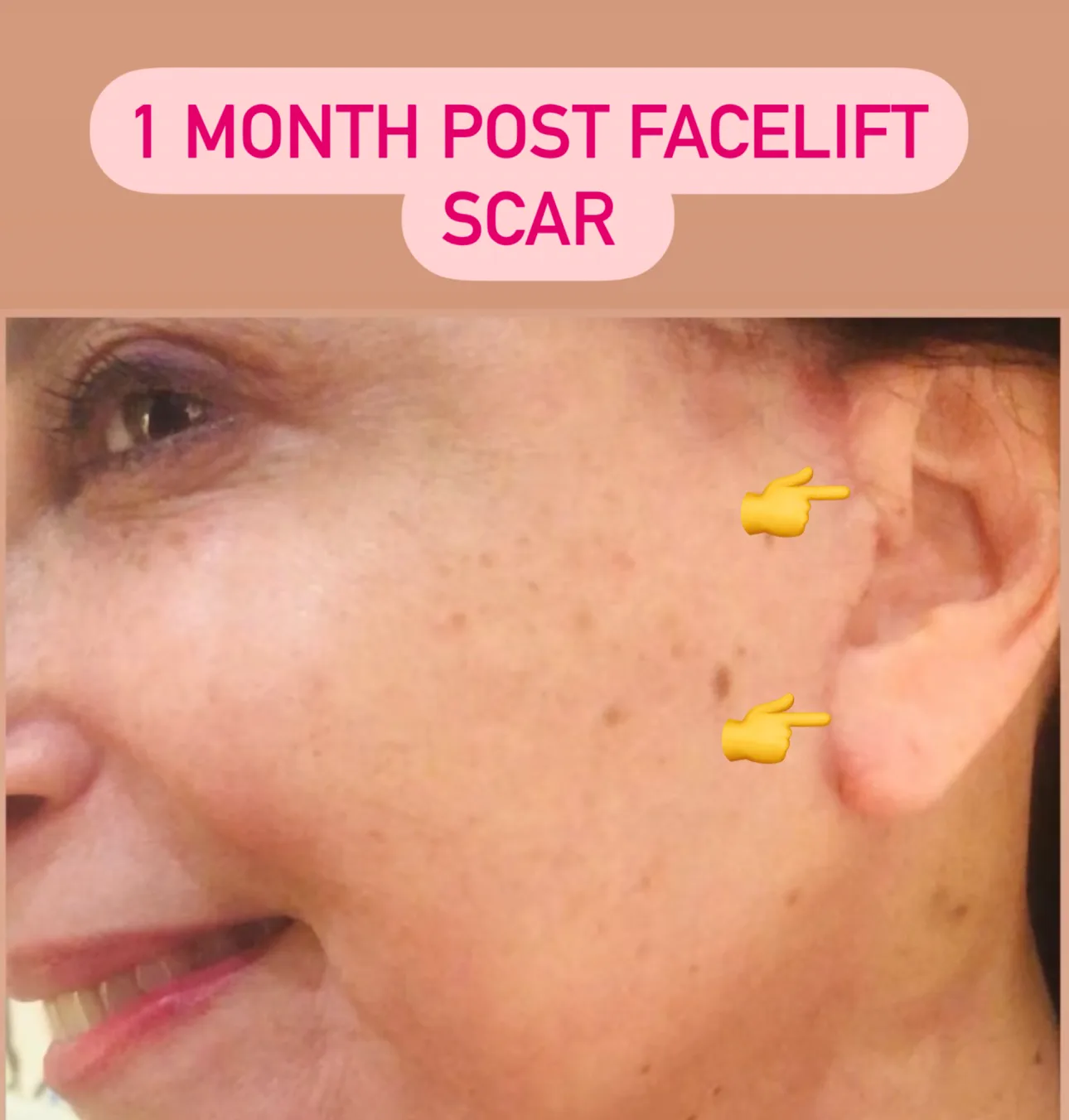
One Month Post-Surgery
- Appearance: The deep plane facelift scars continue to fade, becoming less prominent and integrating with the skin’s natural tone.
- Care: Ongoing scar care and sun protection are vital to prevent darkening of the scars.
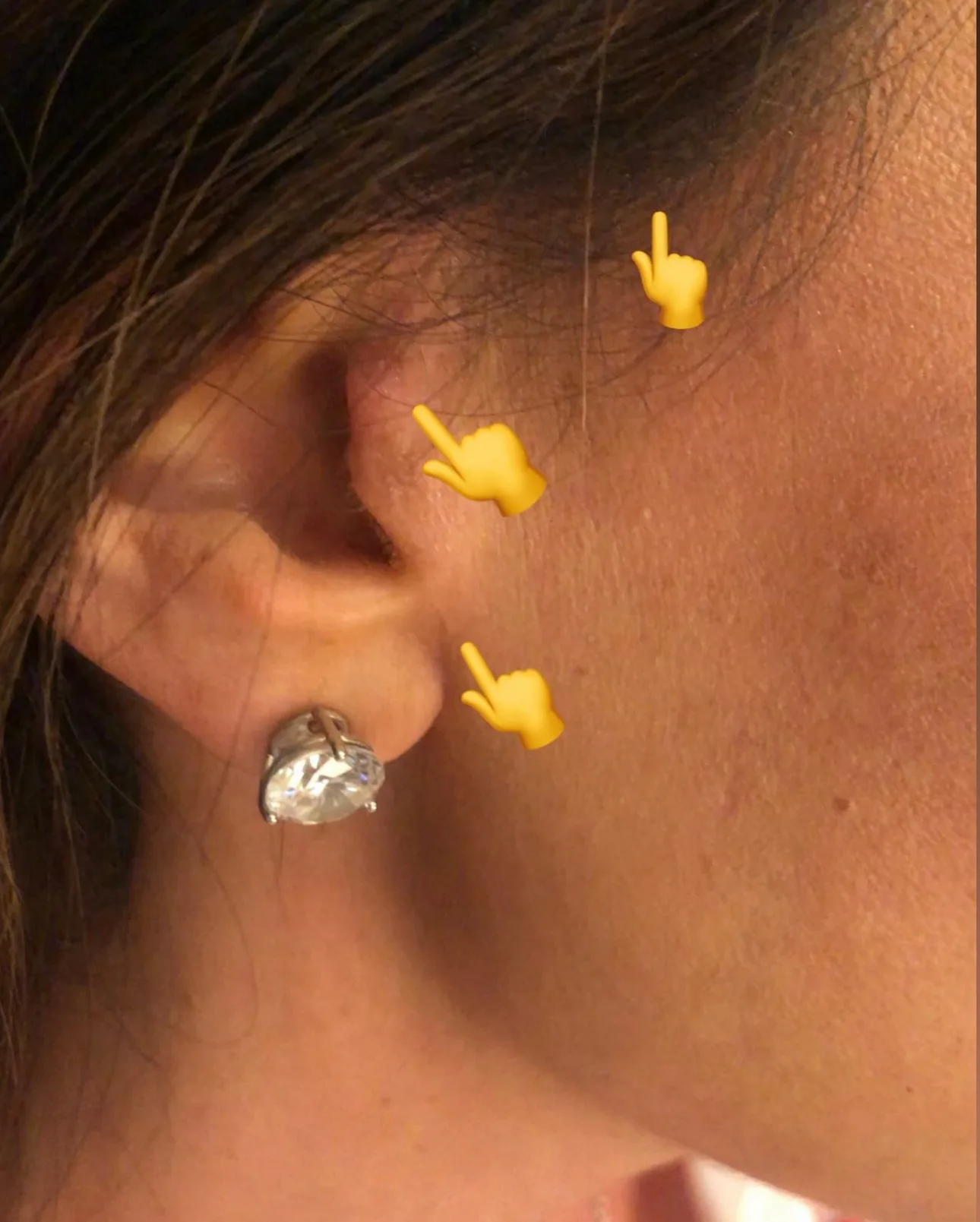
Three Months Post-Surgery
- Appearance: The scars are softer and blend seamlessly with the natural skin tone as you can see in this patient, 3 months after her deep plane facelift procedure.
- Care: Patients in New York can generally resume their regular skincare routine, with continued emphasis on protecting the scars from sun exposure.
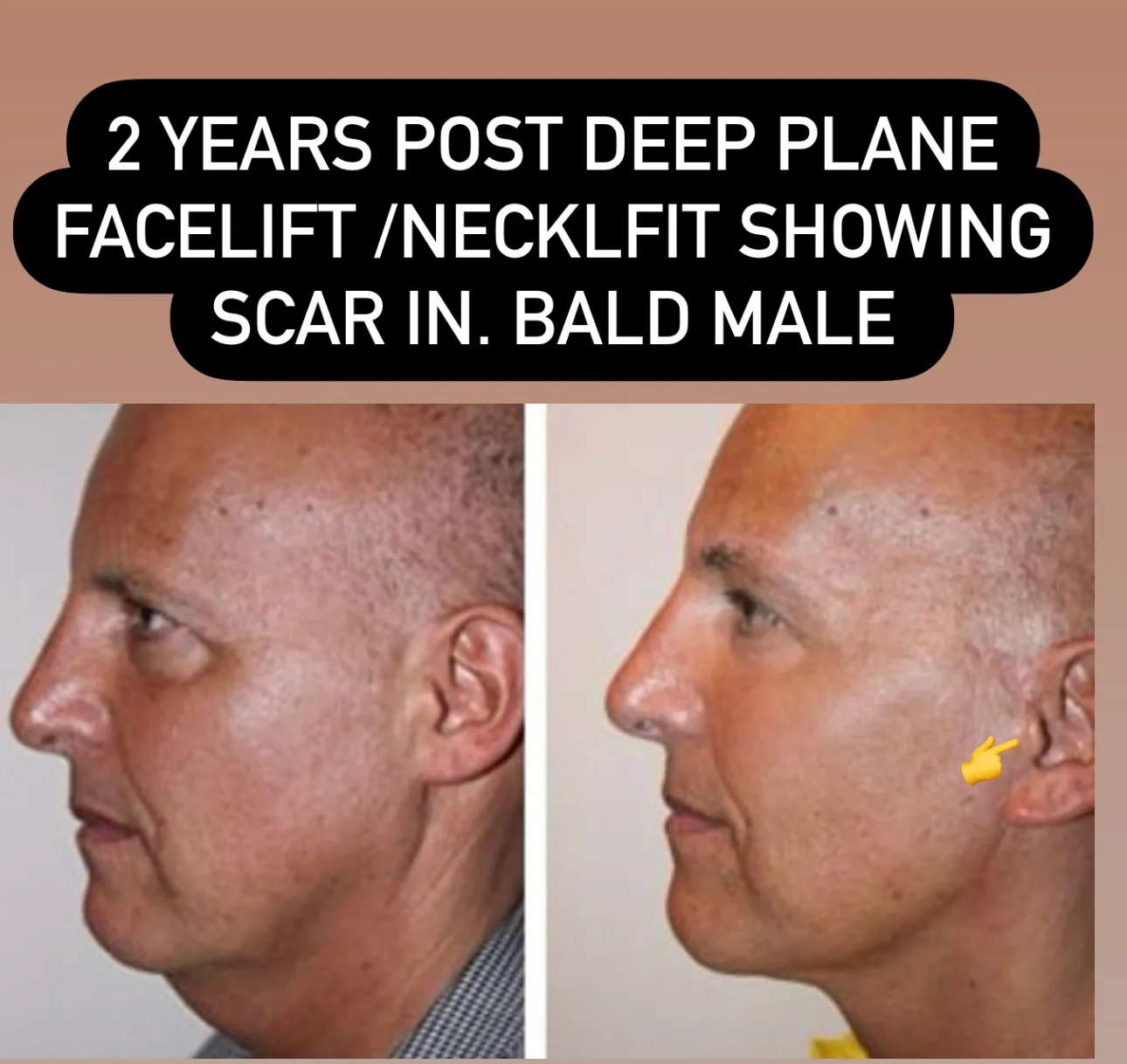
Two Years Post-Surgery
- Appearance: By this time, deep plane facelift scars are typically well-healed and may be barely noticeable, having matured to match the surrounding skin as seen in this male patient.
- Care: Long-term skincare and sun protection remain important for maintaining the quality of the facelift scars.
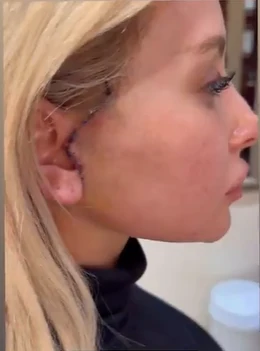
1 Week Post Surgery
- Appearance: Just one week after undergoing a comprehensive facelift and necklift, the absence of drains and the innovative use of tissue glue have significantly reduced swelling and bruising, revealing a more contoured, youthful appearance. The early signs of healing are promising, with the surgical sites displaying minimal redness and the incisions beginning to heal cleanly, indicating a successful procedure.
- Care: In this critical phase of recovery the use of tissue glue facilitates a quicker recovery and simplifies the care regimen, allowing for a smoother transition to normal activities. Gentle care, avoiding strenuous activities, and closely monitoring the healing process under Dr. Rizk’s guidance are essential.
Post Surgery Results
Awards & Certifications
Recovery After Facial Scar Revision Surgery
Recovery from a secondary facelift focuses on ensuring the best possible healing environment for your revised scars:
- Post-Operative Care: Dr. Rizk will provide detailed instructions for caring for your incisions, including cleaning and applying any prescribed ointments.
- Follow-Up Visits: Regular follow-up appointments will be scheduled to monitor your healing progress and address any concerns promptly.
- Minimal Downtime: Most patients can return to their daily activities within two weeks, although complete healing may take several months.
Are You a Candidate?
Candidates for a secondary facelift include those who:
- Have noticeable and unsatisfactory scars from a previous facelift.
- Are in good overall health and have realistic expectations about the outcomes.
- Do not have any underlying conditions that may impair healing.
- Are looking for a refined and improved appearance without the visible marks of surgery.
Potential Risks and Side Effects
While Dr. Rizk’s meticulous approach to revision facelifts significantly minimizes potential complications, it is essential to be aware of the possible risks and side effects. The primary risks associated with surgery include bleeding, infection, and adverse reactions to anesthesia. Side effects, such as swelling and bruising are expected as the body heals and typically subside within a few weeks. Temporary numbness or changes in skin sensation can occur due to nerve repositioning during surgery, but these sensations generally improve as the nerves heal over time.
Other Signs of a Poorly Healed Facelift
Visible scars aren’t the only signs of a poorly performed procedure. Issues such as pixie ears (where the earlobe is pulled down and attached to the skin), blunted tragal cartilage, and unnatural positioning of the earlobes can also indicate a need for revision surgery.
Video Testimonials
Choose Dr. Rizk for Expert Facelift Scar Revision in NYC
If you’re struggling with visible scars from a previous facelift, Dr. Sam Rizk is here to help. His commitment to precision and patient care means that each revision is tailored to provide the best possible outcome, minimizing scarring and enhancing facial harmony.
Schedule a consultation to discuss how best to address and improve your facelift scars for restored confidence and improved facial harmony.

By Dr. Sam S. Rizk, M.D., FACS.
Dr. Rizk is a double board-certified facial plastic surgeon who specializes in rhinoplasty surgery and a recognized expert on the latest advances in facial plastic surgery techniques. He performs a range of facial plastic surgeries at his New York practice.

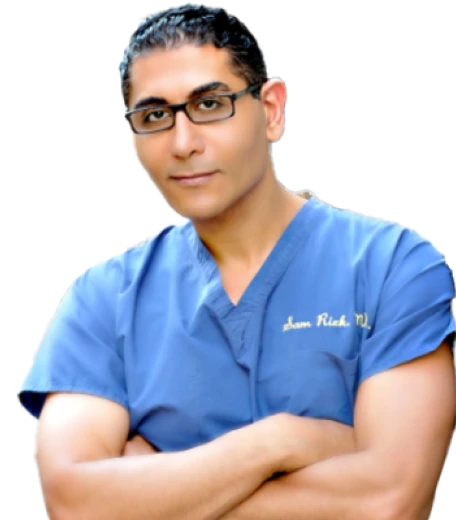


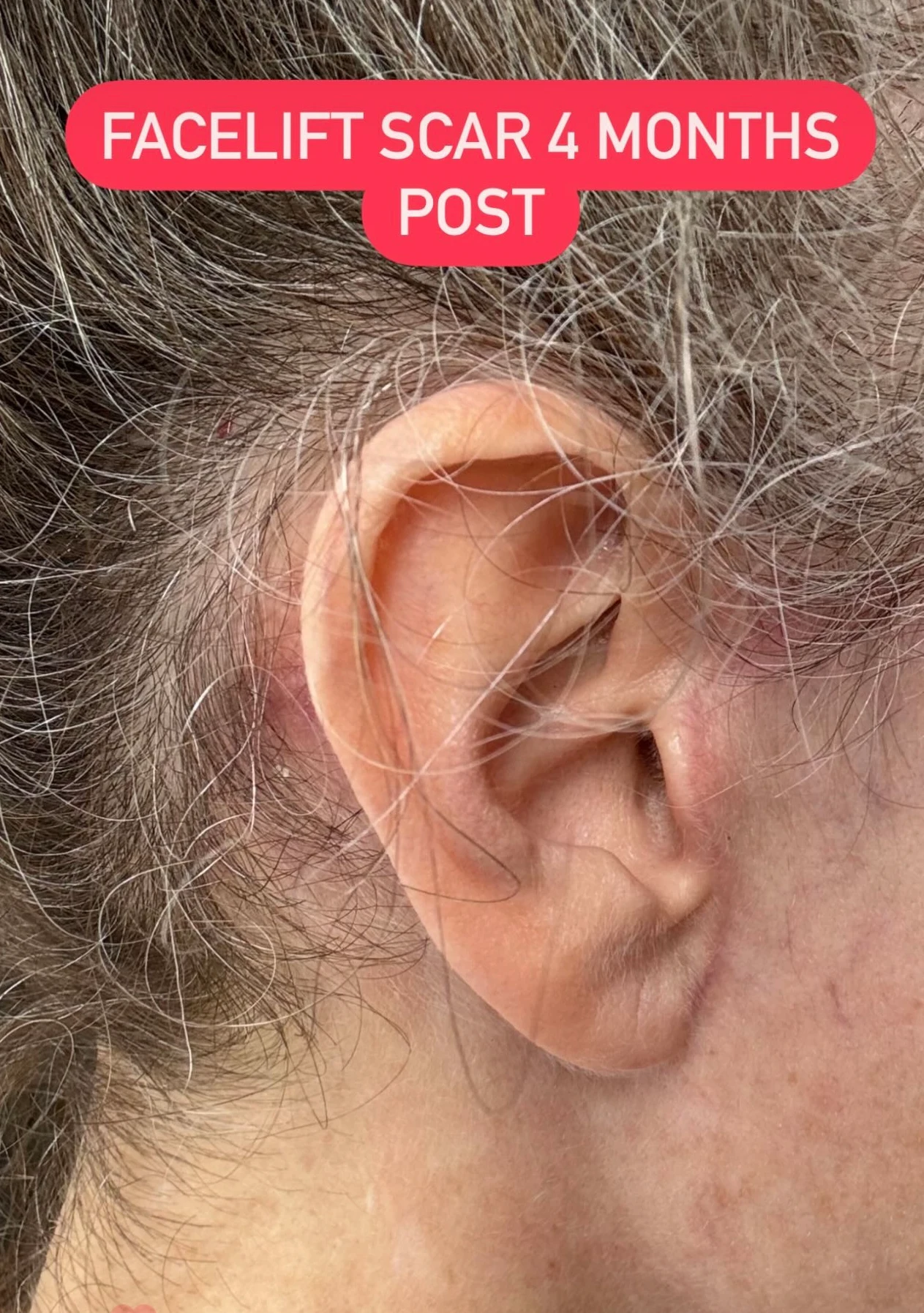
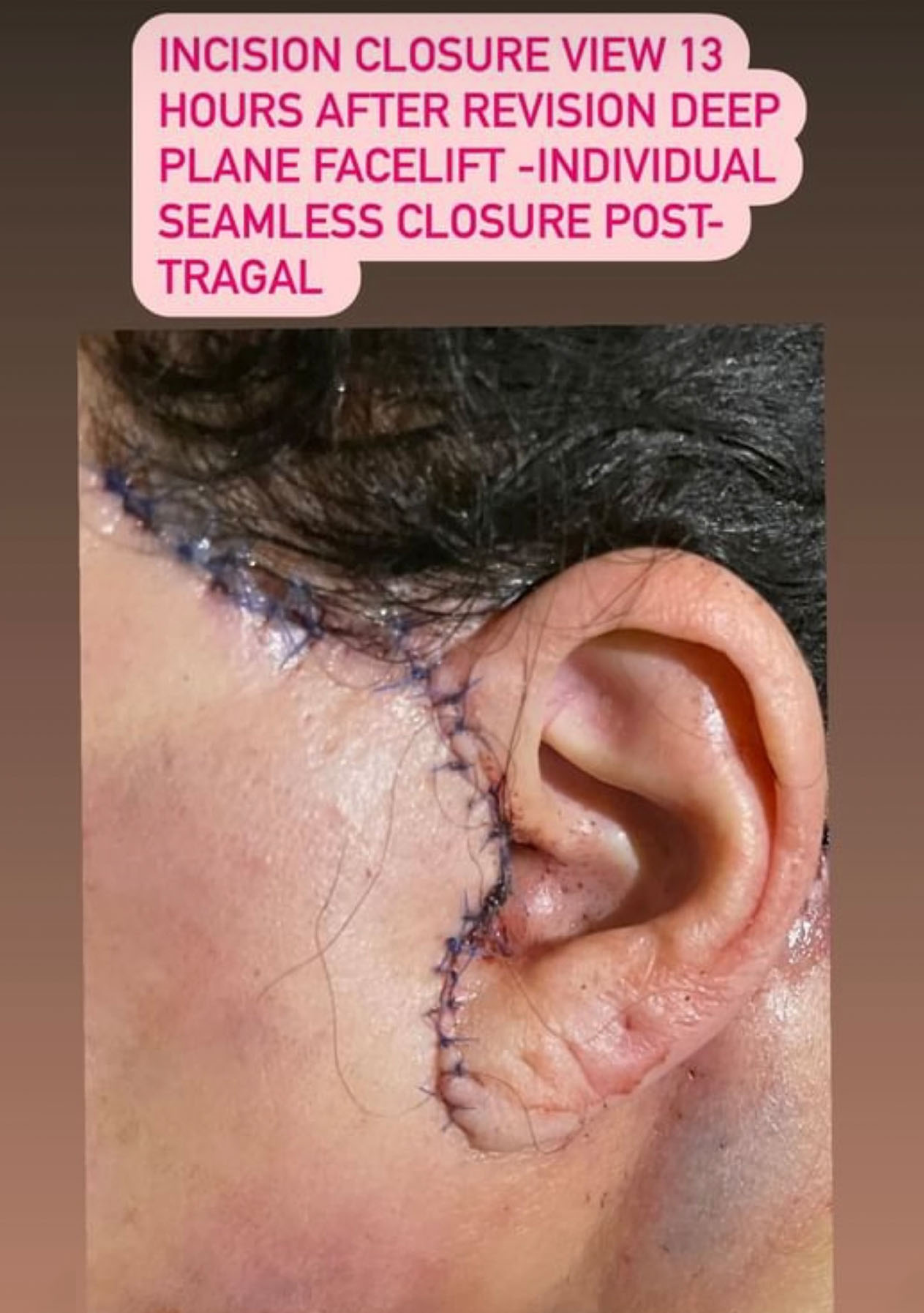
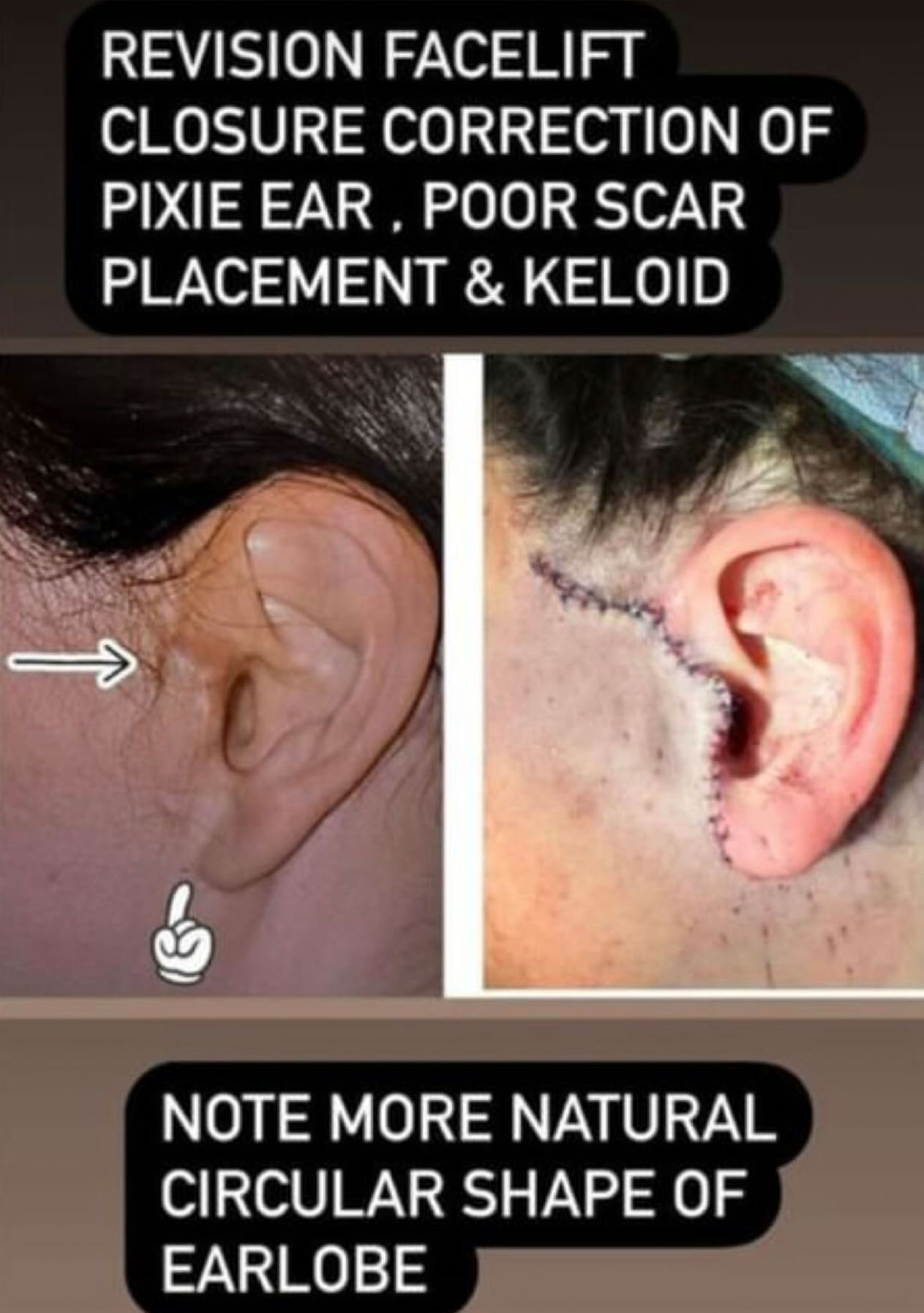

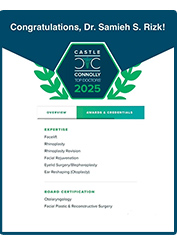
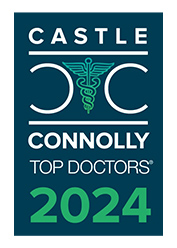

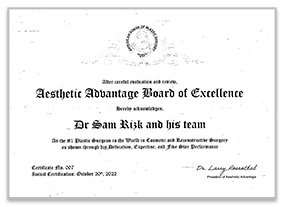
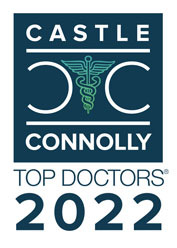

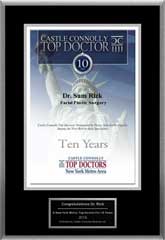
2.jpg)
